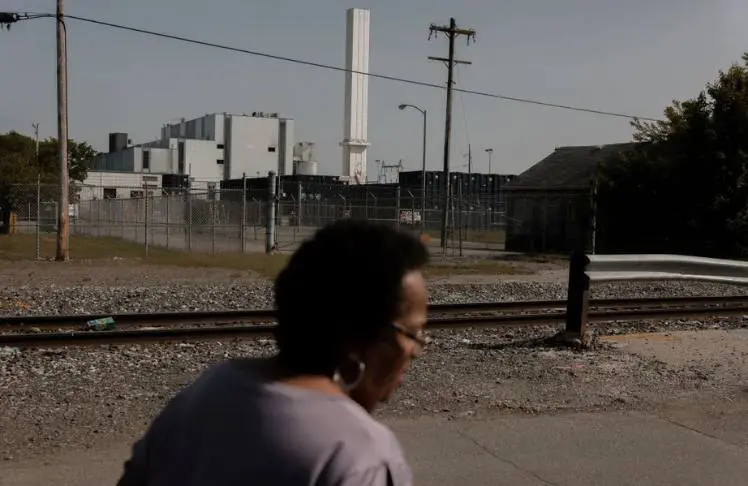
A year ago, New Jersey adopted one of the most ambitious timelines for a state-level transition away from fossil fuels: Jersey aims to run on 100 percent clean electricity by 2035. That will mean a lot more power generated from solar panels, wind turbines, and plants that burn trash as fuel — polluting nearby communities with high levels of lead, mercury, dioxin, and other toxic chemicals.
Somehow, New Jersey considers this kind of waste-to-energy power generation on par with wind and solar. But in Newark’s Ironbound neighborhood, which is home to the state’s largest trash incinerator, that classification seems laughable: the immigrant community suffers from high levels of asthma and other respiratory problems.
It’s the same in other cities, too, like Baltimore, where an incinerator emits a third of the majority-Black city’s industrial pollution.
But as waste-to-energy electricity is included in more and more clean power portfolios — despite the plants’ emissions and their tendency to be located in Black and Brown communities — the Environmental Protection Agency is finally considering new regulations for incinerator pollution, and it’s being framed as a justice issue.
“By reducing harmful pollution and improving air quality, this rule will advance environmental justice for nearby communities already overburdened with pollution,” Michael Regan, the administrator of the EPA, said in a press release.
The proposed new standards (which are currently undergoing a 60-day public comment period) would apply to 57 of the country’s 66 commercial incinerators. According to the EPA, there are 4 million people, many of them people of color, who live within 3 miles of the plants.
There is no safe level of exposure.
The agency valued the health benefits from the reduction of smog and fine particulate matter achieved by the new standards at $14 billion over 20 years, with “additional unquantified economic and public health benefits” coming from the chemical emissions reductions. Incinerators produce an array of toxins, including sulfur dioxide, nitrogen oxides, carbon monoxide, lead, cadmium, and mercury.
Under the Clean Air Act, the EPA is tasked with reviewing emission standards every five years, and the rules for waste-to-energy incineration haven’t been updated since 2006. Some environmental groups argue that incineration has been insufficiently regulated going back to the 1990s. So while the update is a long or maybe even longer time coming, it’s unclear if the rule change, pitched as an environmental justice victory, is part of an effort to make this type of “clean” energy more palatable as the transition away from coal and other fossil fuels continues in earnest.
Waste-to-energy power generation is a long-standing technology, but in many ways, it’s akin to more novel means of generating electricity, like the pyrolysis of used tires and other plastic waste, or fuels like “blue” hydrogen that only earn a wash of green from untested carbon storage plans.
They aren’t coal, or even natural gas, but while they represent some decrease in greenhouse gas emissions, the waste-to-energy industry talks in terms of offsetting methane emissions that come from burning trash instead of burying it in landfills which do generate huge amounts of methane emissions.
But that doesn’t make these desirable alternatives. The nonprofit Project Drawdown, which catalogs alternative energy solutions that can and will be needed to decarbonize the economy, calls waste-to-energy a transition solution: “one that will decline as preferable waste-management solutions, including zero waste, composting, and recycling, become more widely adopted.”
But even if burning municipal trash is somewhat better for the environment than other means of generating power, and even if incinerators can operate while producing less toxic emissions than they do currently, that still doesn’t make them a good neighbor. For many of these chemicals, like dioxin, there is no safe level of exposure — so reducing the amount that incinerators can emit to anything more than none isn’t really going to protect the Black and Brown people who live alongside them.















